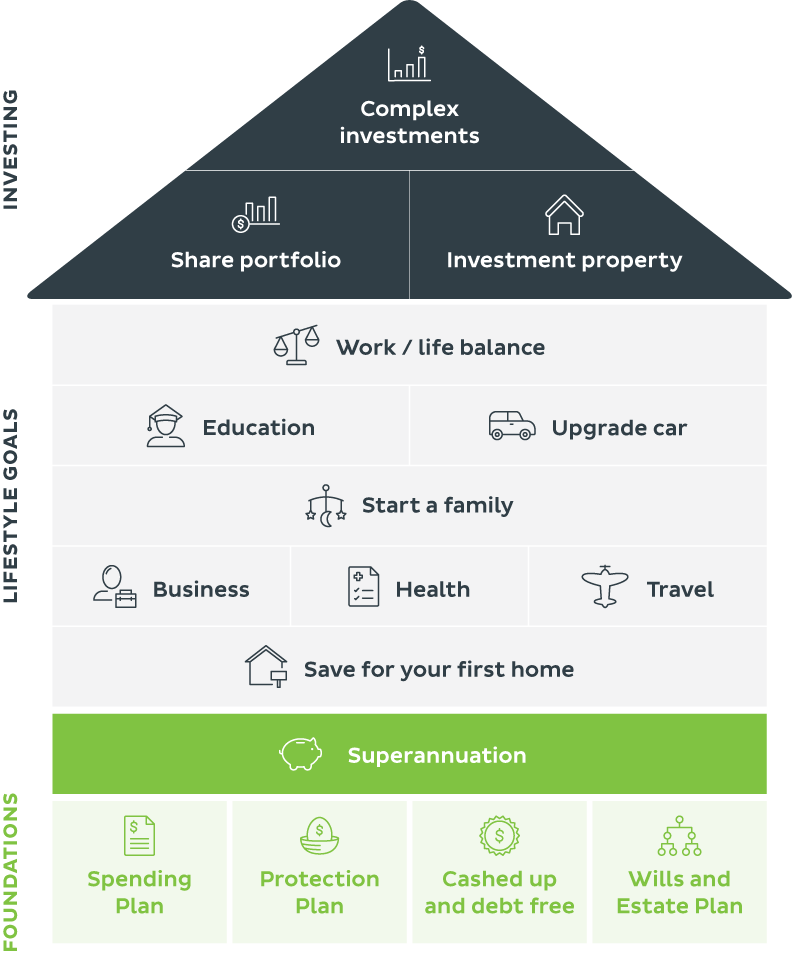Your spending plan provides a guideline for how you distribute your income and ultimately fund your lifestyle and investment goals.
Having one in place is important to support effective management of your finances and align your financial priorities to determine where you best spend your money.
To create one, you need to understand where your money is coming from and where it’s going, essentially mapping all your expenses against your income. By monitoring your spending, you’ll get greater clarity and support longer term saving goals.
Cashed up: For many Australians, finding money to cover a large unforeseen expense can be difficult. Having cash put aside in an emergency fund enables you to pay for unexpected expenses should they arise.
Having at least three months’ worth of after-tax expenses in your emergency fund if you are employed, and six months’ worth if you are self-employed, can help cover expenses in an emergency.
Debt free: Being debt free is not necessarily about having no debt as for most of us, being debt free is unrealistic. Also, not all debt is considered bad, so it’s important to understand the difference between good and bad debt.
Good debt, such as a home loan, can provide long term financial benefits and ultimately add to your overall net worth. While bad debt, such as a credit card or a personal loan, comes with interest and isn’t likely to return any financial profit or gain, ultimately becoming a substantial burden.
So, by being debt free, we refer to getting rid of consumer debt, the bad debt. By prioritising paying off this debt it enables you to have more money to fund your lifestyle and investment goals. This is likely to be the hardest step to take and may for some people take quite a while to achieve.
This is your insurance and may include Life, Income Protection, Critical Illness and Total and Permanent Disability insurance.
When building your spending plan, it’s important to factor the cost of this protection in. Everything we do in our lives, including funding our ‘lifestyle goals’ and ‘investing for the future’ comes out of the spending plan. Having life insurance in place is important as it can ensure that the money doesn’t stop coming into your spending plan if you can’t work for a little or a long time due to an injury or illness.
Learn more about TAL Life Insurance or speak with a financial adviser.
This is such a critical foundation to have sorted in your life. It not only ensures your wishes are carried out in the event you pass away, it also makes it easier to sort out the financial footprint of your life and ensure that your loved ones are protected should you no longer be around.
Part of your estate planning will be stating the direction of the flow of your wealth, to whom it goes to and under what circumstances. This also includes closing accounts, selling assets, gifting money as well as the beneficiaries of your superannuation, and or life insurance.
When done right, you may only need to change your will once or twice in your life.
This is an important part of your sound financial house. It’s positioned as the floor, or slab and it’s a very significant asset because you are contributing to your retirement savings every time you go to work.
Unfortunately, too many Australians are disengaged and don’t pay enough attention to their superannuation. It’s important to remember that your Superannuation is your money: you have earned it, worked hard for it and now it will work hard for you over the coming years, so the you of tomorrow can have money set aside for when you retire.
To learn more, contact your superannuation fund.
Once you’ve got the foundations laid and the slab built, you can consider what your house may look like.
When planning for the future it’s important to be clear on your lifestyle goals. These may include day to day spending, rent or mortgage repayments, utilities, dining out or entertainment, transport, kids activities or childcare – all the usual stuff in your spending plan.
Your spending plan should then tell you what’s remaining after all the basics have been taken care of. This can now be allocated to other lifestyle goals. You might allocate some of the remaining for a holiday or put it towards investing in the future.
Now that you’ve built your house on a stable foundation you are ready to invest for the future. Whether it be for the next year, the next five to ten years, retirement or beyond. You may invest in property, shares, or other complex investments such as precious metals or crypto currency.
It’s important that when investing for the future your choices align with your long-term goals and appetite for risk.
Regardless of your investment strategy, it can’t protect you from overspending, overborrowing or other challenges you may face. This is why it’s important to align with your spending plan.
You may want to explore investing on your own, or you may choose to speak with a financial adviser who will work with you to build a personalised investment strategy.


